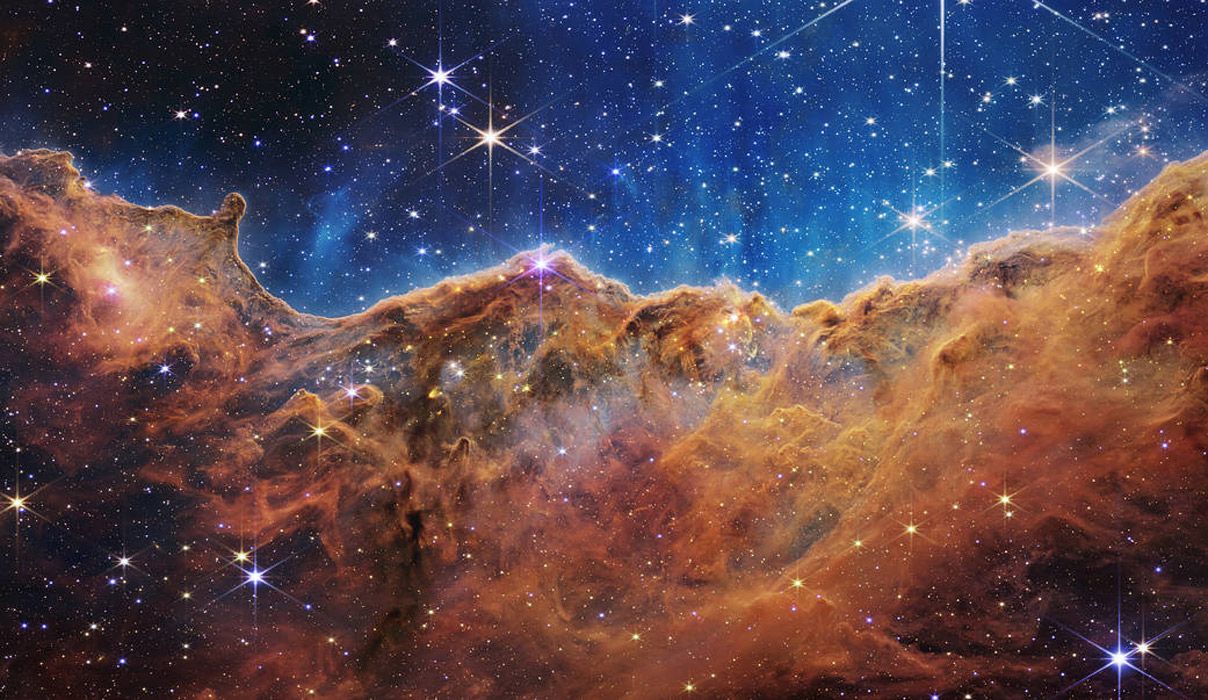Arguably, there are better ways to use billions of taxpayer dollars. But future generations will be glad we spent it.

The James Webb Space Telescope cost taxpayers $10 billion. For that considerable sum, we’ve recently been treated to some spectacular photos of the cosmos. Judging by the comments of my friends, the reaction to these views has been wonder, even if few know their scientific significance.
But are the beautiful photos worth it? After all, this instrument cost 10 times the estimated value of the Mona Lisa. Or if you’re not an art fan, imagine the bill for 50,000 Lamborghinis.
Surely someone could make a reasonable argument that — with all the troubles in the world today — we shouldn’t spend such a sum just to add new illustrations to college textbooks or to beautify the flanks of city buses.
To which I would respond that future generations will be glad we spent it.
It’s not that new astronomical knowledge will, by itself, improve the lives of our kids and grandkids. When, in 1543, Nicolaus Copernicus finally dismissed the 2,000-year-old idea that the Earth was the center of the solar system, the standard of living in Poland didn’t suddenly make a great leap forward. And yet Copernicus’ work demonstrated something of profound philosophical importance: Humans, as special as we are, occupy an unremarkable speck of dirt and dust in the universe. Our location is humdrum, and it’s likely that our talents are likewise unexceptional. We have good reason to be humble.
Thanks to its special talents, the James Webb telescope could very well have a similar effect. Unlike the Hubble Space Telescope, the James Webb doesn’t see in visible light — the range of wavelengths to which our eyes are sensitive. The James Webb is an infrared telescope, which makes it useful in two important areas of astronomy. The first is understanding the history of the universe. How did the convulsion of the Big Bang 13 billion to 14 billion years ago lead to stars, galaxies, life and us? We are curious about this story in the same way that we want to know our family history.
Because the universe is expanding, the light reaching us from distant objects is reddened. Consequently, if we want to see how the cosmos looked when it was still young — to understand the cosmos’ life history — it’s best to do so by using a telescope that is sensitive to deep red light. And that was much of the motivation behind building the James Webb telescope. Cosmology — unraveling the history of our universe — is astronomy’s No. 1 job.
But if understanding how we came to be is the telescope’s “big picture” challenge, a second major interest is equally compelling: Does life exist beyond Earth? James Webb may answer this question by examining the atmospheres of planets orbiting distant stars and possibly finding tell-tale signs of biology such as oxygen or methane.
Although a longer shot, it’s also possible that the James Webb could discover evidence of sophisticated beings. It might uncover massive constructions assembled by a highly advanced society: artifacts on the scale of solar systems that could be the handiwork of an intelligence thousands or millions of years more advanced than our own. This would, once again, show that humans are not the only game in town, and certainly not the best game.
Are such things essential to know? Of course not. For 10,000 generations humans had no idea how their species came to be. Yet they stumbled through their lives, finding occasional joy despite an ignorance as vast as the Canadian prairies. But anyone who can look at the stars on a summer night and not question what they are, or wonder if some of those heavenly lights illuminate populated worlds, well, that individual has lost the ability to marvel and to experience the satisfaction of understanding something about how nature works. Ignorance is not bliss.
And while studying the sky doesn’t cure disease or generate significant economic activity, it has both inspired physics and served as a check on its theories. And physics very much does affect your lifestyle.
At the beginning of the 20th century, astronomers noticed that the orbit of the planet Mercury differed slightly from what Newton’s physics predicted. A small discrepancy might seem to be of no consequence, like making an error of a dime on your taxes. But while classical physics didn’t precisely agree with Mercury’s behavior, Albert Einstein’s physics did. And his relativity theory — which may have seemed abstract and useless a century ago — is now an essential part of our lives, incorporated into everything from the Global Positioning System (GPS) to cellphones. For a half millennium, astronomy has been the muse of physics.
We don’t know what mysteries the James Webb telescope will unveil. If we did, we wouldn’t have had to build it. But history tells us that every time we peer skyward with a new telescope, we find novel and frequently dramatic phenomena. And even aside from the eventual spinoff from these discoveries, learning the universe’s history and better knowing our place within it are gifts that no fleet of Lamborghinis can match.
This image was first published on nbcnews.com.





